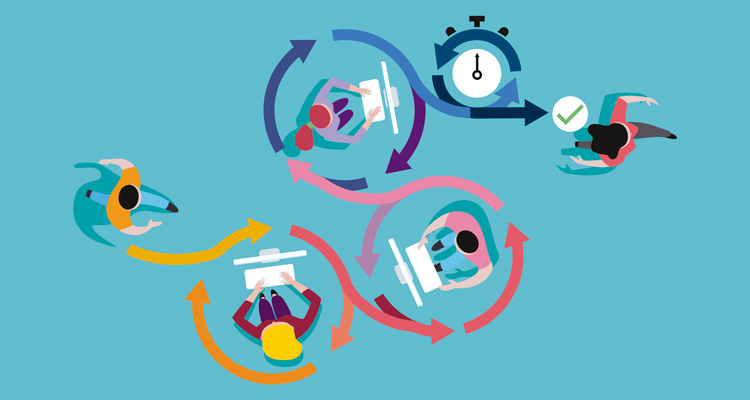
Guardrails are designed to keep people from unintentionally straying into dangerous territory. They are usually placed in the trickiest areas, where it is easy to take a wrong turn. Just as guardrails along the roadway keep drivers safer, decision–making guardrails can protect businesses from taking unnecessary risks.
Our concept of guardrails for knowledge work was born at a leadership offsite for Planview AgilePlace’s executives. We were discussing how we could provide our employees with the independence they needed to make business decisions, while ensuring that their efforts were aligned with our business needs.
The bulk of business opportunities lie in the daily decisions of individual contributors (IC). When control is centralized, ICs have to constantly ask permission for their decisions, resulting in a system that is tightly coupled and highly inefficient. However, when management provides their ICs with the tools they need to safely make independent decisions, the organization can simultaneously reduce risk and speed up value delivery.
Netflix has proven this to be effective; their well-documented “context, not control” mentality helps them establish guardrails — guiding their employees toward good practices, while allowing them the freedom to make decisions that support business goals.
Guardrails, Freedom and Responsibility at Netflix
Netflix’s management relies on decision–making guardrails (although they don’t call them that) to help their engineers safely make smart decisions. For services running in production, the Cloud Services Team guidelines include:
- Don’t modify a server once deployed — recreate it from scratch with a new instance (immutable server pattern)
- Register every service in the service discovery system
- Route traffic between server instances for fast rollback capability
- Maintain a minimum of three instances of every service running in production for reliability
Netflix Build & Developer Tools Manager, Mike McGarr, says additional decision guidelines exist, but outside of them, engineers are free to make decisions based on their goal of solving a business problem. He explained their method in his talk at the DevOps Enterprise Summit in October: “Managers focus on the ‘what’; engineers focus on the ‘how’.”
This freedom comes with responsibility for solving issues resulting from poor decisions. Problems across the company are managed with context, not authoritative control. Managers share business context with their teams and give their people the freedom to decide how to solve each business problem.
In addition to decision-making guidelines, Netflix also uses tools that help employees self–correct. McGarr provides an example of Netflix’s use of their Conformity Monkey tool, which automatically sends compliance feedback so engineers can self–correct any work results that may have veered outside of the guardrails (without involving management).
Establishing Boundaries for Better Decision Making
Guardrails help smart people make high–quality decisions faster and with less risk. Companies see greater alignment across the organization when they provide employees with context for understanding business needs, guardrails for decision–making support and responsibility for the decisions they freely make.
Guardrails can help all employees identify and avoid danger zones. In some organizations, a simple boundary such as, “Anything past this point might have others questioning your judgement,” might be a good place to start.




